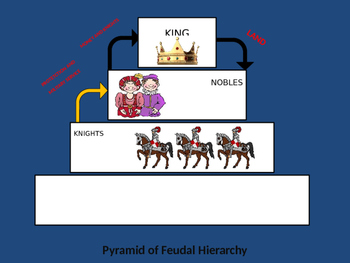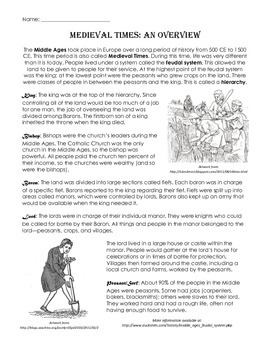

Feudalism, the political and social system that characterized medieval europe from about. The same noble might be a system often resulted vassal to many different lords. In practice, it demanded that everyone owed .įeudalism Webquest Docx Student Name Feudalism Webquest Date Class Period Directions Using The Websites Listed Below Learn About The Feudal System Of Course Hero from Use a diagram to show the causes and effects of feudalism. Your task is to reflect on what you have learned and receive feedback from you teacher. Daily life in the middle ages reading comprehension worksheet medieval . At the end of this activity, students will no doubt complain that the king now has 46 pieces of candy while they, as peasants, have but four.The feudal system display poster. In the early medieval period, the rights of man were not a major concern survival was. Using the classroom arrangement on page 39 and the procedures above, the final candy distribution might look like this: the peasants, 4 candies the vassals, 12 candies the nobles, 22 candies the king, a lusty 46 candies.

(The lines on the diagram indicate the number of peasants to each vassal.)įrom each peasant's payment, the vassal is to keep one piece and give five to his lord, the noble.įrom each vassal's payment of fidelity, or loyalty, the noble is to keep two pieces and give three candies to the king (once again using the spoon or glove). Since the peasants were paying for their protection with their crops, have the vassals confiscate six M&M's from each peasant using their spoons or rubber gloves. The candy is to represent the harvest reaped in a particular year by the peasants. The nobles and vassals should also be given a plastic spoon or a glove. Give each student or member of the realm a paper cup containing ten M&M's. (Availability of space will dictate the room arrangement and necessary modifications.) (If an overhead projector is not available, simply reproduce the diagram onto a chart or copy it on the chalkboard.)Īrrange the room to approximate the diagram. Then, depending on whether they belong to the realm of Noble A or that of Noble B, students should arrange their desks similar to the diagram on page 39, which the teacher should place on the overhead projector. Have students draw identification role cards at random. Use the sample diagram on page 39 as a guide. Make a transparency of a Feudal Classroom that represents your students. The ratio of total students in the class to nobles should be about 10 to 1. Throughout the activity there can be only one king.

Depending upon the number of students, you may have to alter the number of cards slightly to keep the approximate proportions. If you have a third noble, the role cards would be divided into thirds. The Noble, Vassal, and Peasant cards need to be categorized into two respective domains: one-half of each are to be marked A, and the other half are to be labeled with a B. For example, in a class of 21 students, roles could be assigned as follows: 1 King, 2 Nobles, 6 Vassals, and 12 Peasants.

Prepare only one King identification card since there will be only one student in this role at any given time. Reproduce and cut out the role identification cards on page 38 in the following class percentages (approximate): Noble (10%) Vassal (30%) Peasant (55%). Students will identify the order of societal rank and loyalties within feudal Europe. Social Studies, Ancient History, World History


 0 kommentar(er)
0 kommentar(er)
